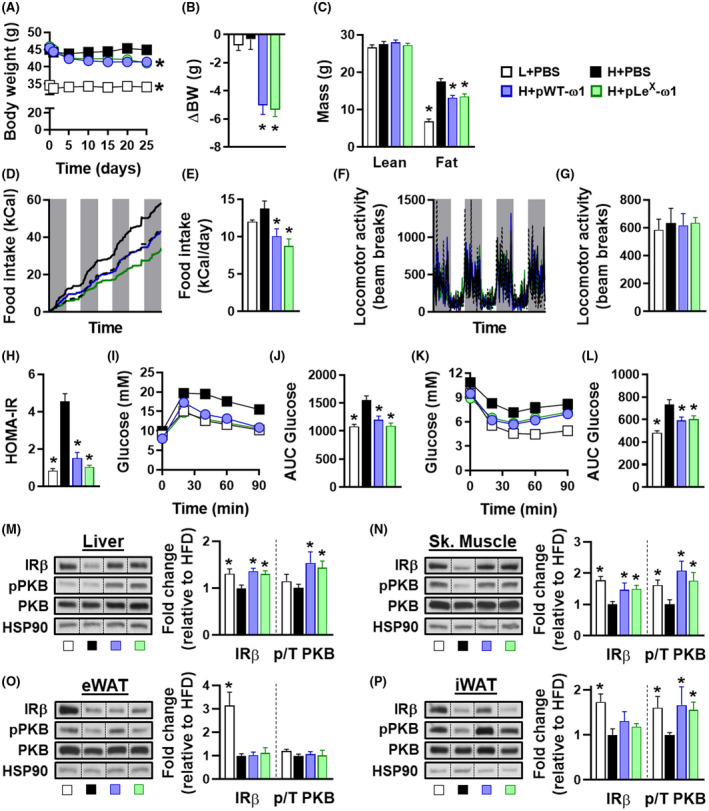FIGURE 3.

ω1 glycovariants reduce body weight, fat mass and food intake, and improve whole‐body metabolic homeostasis in obese mice. Mice were fed a LFD (white bars) or a HFD for 12 weeks, and next received biweekly intraperitoneal injections of PBS (black bars) or 50 µg pWT‐ω1 (blue bars) or pLeX‐ω1 (green bars) during 4 weeks. Body weight (A and B) was monitored throughout the experimental period. Body composition (C) was measured after 4 weeks of treatment. Food intake (D and E) and locomotor activity (F and G) were assessed using fully automated single‐housed metabolic cages during the first week of treatment. HOMA‐IR at week 4 (H) was calculated. Intraperitoneal glucose (I and J) and insulin (K and L) tolerance tests were performed during week 3. Blood glucose levels were measured at the indicated time points (I and K) and the AUC of the glucose excursion curve were calculated (J and L). After 4 weeks of treatment, mice received an i.p. injection of insulin (1 U/kg lean body mass) and after 15 minutes, pieces of liver (M), skeletal muscle (N), eWAT (O), and iWAT (P) were collected and snap‐frozen immediately. The protein expression of IRb and the phosphorylation state of PKB‐Ser473 (pPKB) were assessed by Western blot and quantified by densitometry analysis. HSP90 expression was used as internal housekeeping protein, and phosphorylation of PKB is expressed as a ratio of phosphorylated over total PKB. Representative Western blots are shown. Data shown are a pool of at least two independent experiments. Results are expressed as means ± SEM. *P < .05 vs HFD (n = 11‐20 mice per group in A‐C, H‐L, and 4‐9 mice per group in D‐G, M‐P)
